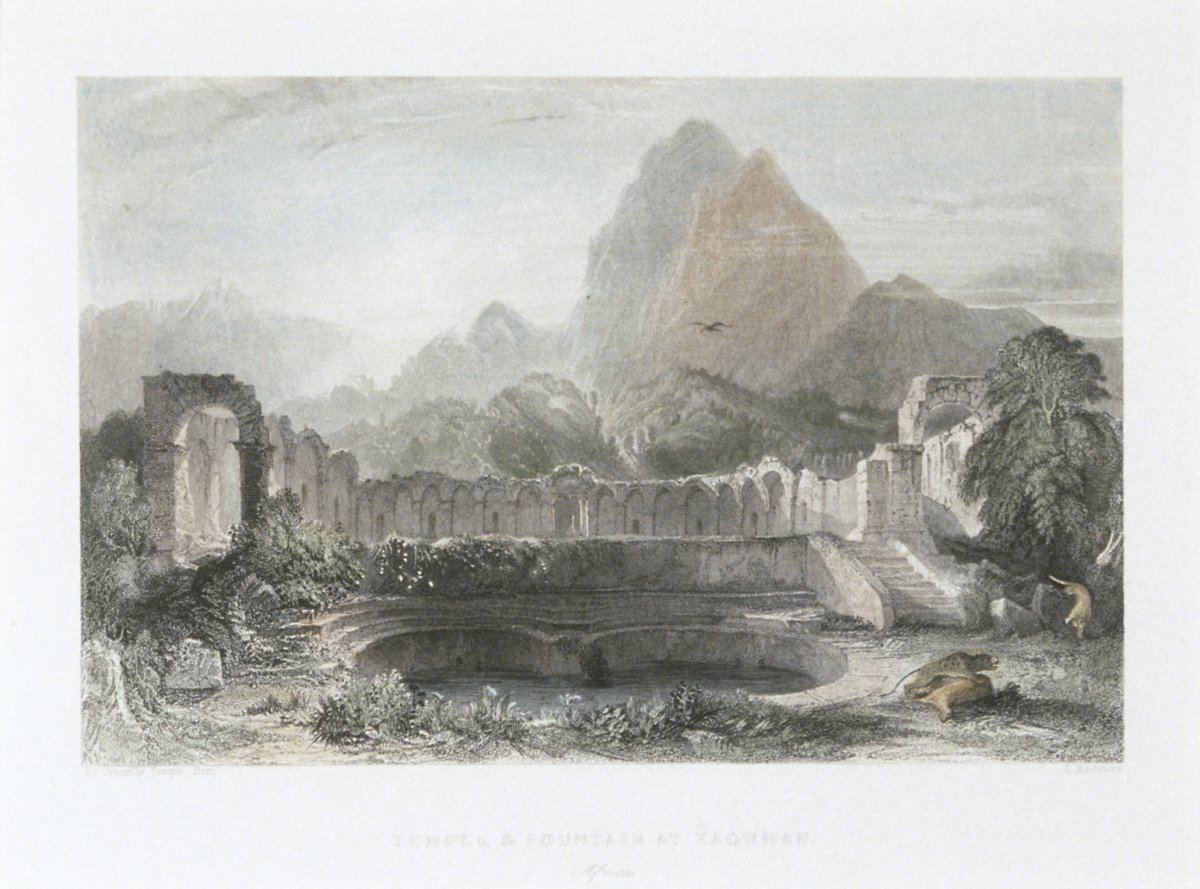This engraving is a panoramic view of a significant archeological site in Zaghouan, currently known as The Water Temple. Situated on the northern side of the Tunisian Dorsal mountains, the temple is best known for its rich springs and semi-circular fountain erected under the Roman Emperor Hadrian in the 128AD. The importance of water in the history of Zaghouan is best illustrated by its Aqueduct, which was built to facilitate the transport of water from Zaghouan to Carthage after a drought of five years in North Africa. Extending over 132km, the aqueduct is a masterpiece of architecture and is one of the longest constructed during Roman times. The Water Temple’s ancient fountain is surrounded by arched niches that once held 12 statues depicting the months of the year. In the rocks behind the temple, the method of excavating these huge blocks can still be seen in some of the cracked stones. This engraving is part of Sir Grenville Temple’s ‘Travels in Greece and Turkey and the Mediterranean’ published in two volumes in 1843.
